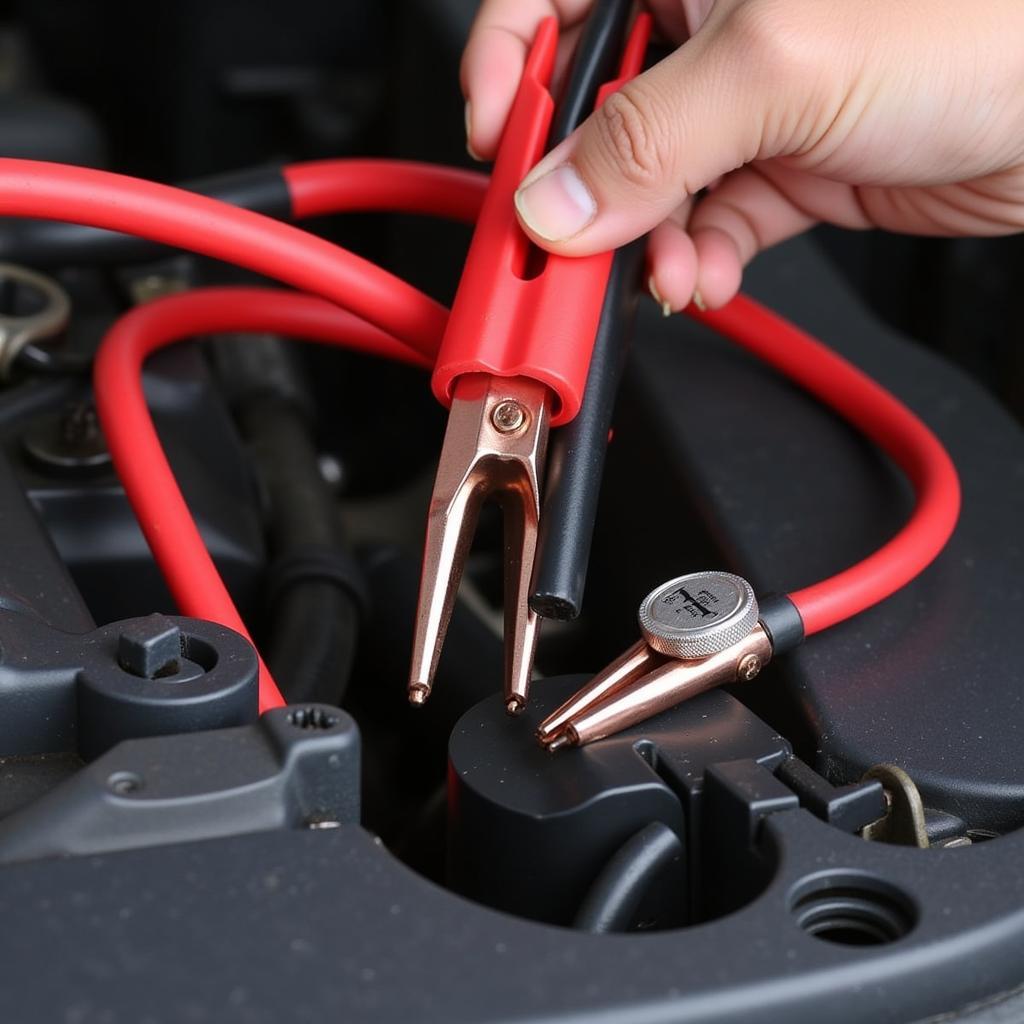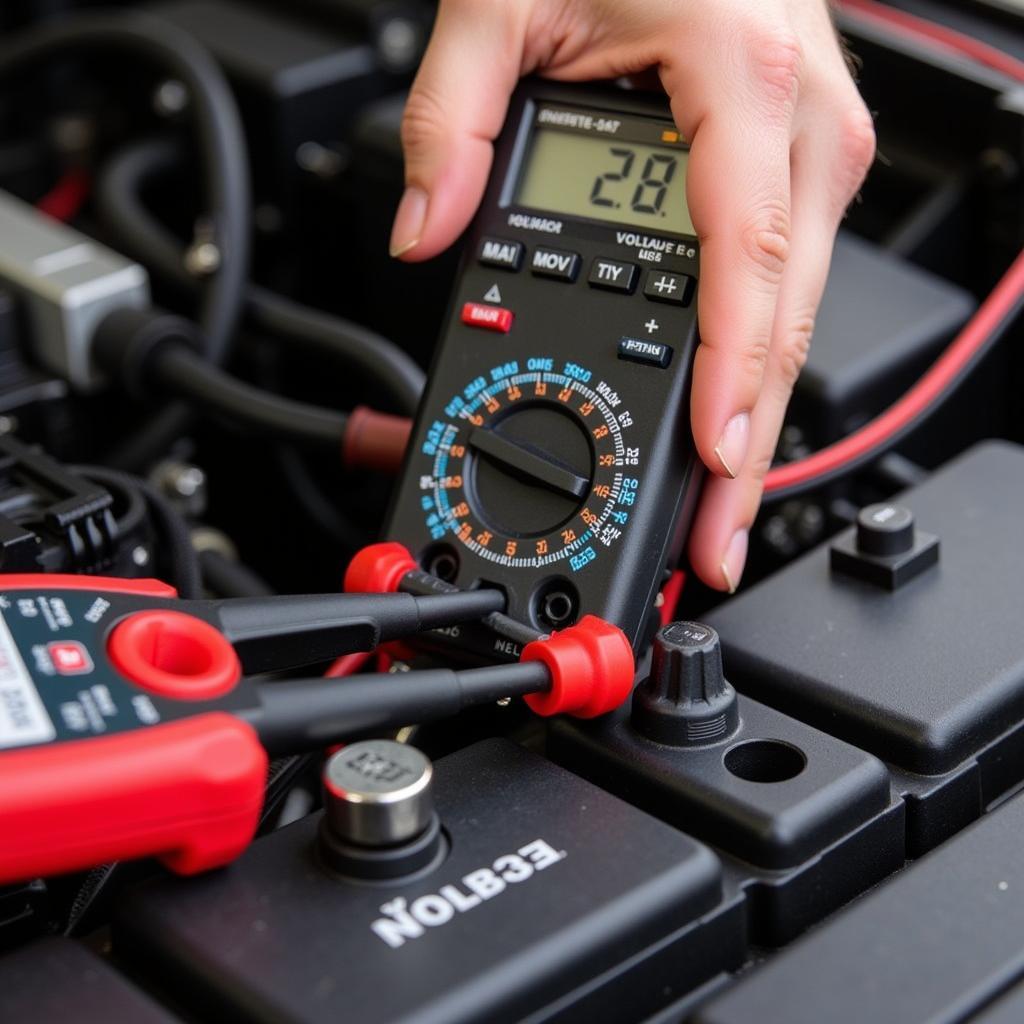Draining your car battery can be a frustrating experience, especially when you’re in a hurry. This comprehensive guide provides solutions for reviving a dead battery and offers preventative measures to avoid future occurrences. We’ll cover everything from jump-starting your vehicle to understanding the underlying causes of battery drain. Let’s get your car back on the road!
Why is My Car Battery Drained?
A drained car battery can stem from several issues. Leaving lights on overnight is a common culprit, as is extreme weather, especially cold temperatures. A faulty alternator can also prevent the battery from recharging while driving, ultimately leading to a dead battery. Additionally, old age can simply cause a battery to lose its ability to hold a charge.
Common Causes of a Dead Car Battery
- Lights Left On: Interior lights, headlights, or even trunk lights can drain your battery surprisingly fast.
- Extreme Temperatures: Cold weather slows down chemical reactions within the battery, reducing its capacity. Hot weather can evaporate battery fluid, shortening its lifespan.
- Faulty Alternator: The alternator recharges the battery while the engine is running. If it malfunctions, your battery won’t receive the necessary charge.
- Old Age: Like any other component, car batteries have a limited lifespan. Over time, they lose their ability to hold a charge effectively.
- Parasitic Drain: Even when the car is off, certain electrical components might continue to draw power, slowly draining the battery. This could be anything from a faulty clock to a malfunctioning door lock actuator.
 Jump Starting a Drained Car Battery
Jump Starting a Drained Car Battery
How to Jump-Start Your Car
Jump-starting a car with a dead battery is often the quickest solution. However, it’s crucial to do it correctly to avoid damage to your vehicle’s electrical system. Follow these steps:
- Gather the necessary equipment: Jumper cables and another vehicle with a working battery.
- Position the vehicles: Park the working vehicle close to yours, ensuring the batteries are within reach of the jumper cables.
- Connect the red (positive) cable: Attach one end to the positive terminal of your dead battery and the other to the positive terminal of the working battery.
- Connect the black (negative) cable: Attach one end to the negative terminal of the working battery. Attach the other end to a metal grounding point on your car’s engine block, away from the battery.
- Start the working vehicle: Let it run for a few minutes to provide a charge to your dead battery.
- Start your vehicle: If it starts, disconnect the cables in the reverse order of connection.
honda crv brake warning light stays on
Preventing a Drained Battery
Preventing a drained battery is often easier than dealing with the consequences. Here are some preventative measures you can take:
- Regularly check your battery terminals: Ensure they are clean and corrosion-free.
- Turn off all lights and accessories: Double-check that headlights, interior lights, and the radio are off before exiting your vehicle.
- Limit short trips: Short trips don’t give the alternator enough time to fully recharge the battery.
- Have your battery tested regularly: A professional can check the health of your battery and identify potential problems before they lead to a complete drain.
Testing Your Car Battery
Several methods can be used to test your car battery, from simple voltmeter checks to more sophisticated load tests. A load test can provide a more accurate assessment of your battery’s capacity under stress.
“Regular battery testing is a simple yet effective preventative measure. It can save you from the inconvenience of a dead battery and potentially identify other electrical issues within your vehicle,” advises John Smith, Senior Automotive Electrical Technician at Smith Automotive Solutions.
What to Do if Jump-Starting Doesn’t Work
If jump-starting fails, your battery might be beyond recovery and require replacement. Alternatively, there might be a more serious electrical issue, such as a faulty alternator or a parasitic drain. In this case, it’s best to consult a qualified automotive technician.
check engine light came on after jump start
“A dead battery can sometimes be a symptom of a larger problem, such as a parasitic drain. Diagnosing and fixing the root cause is essential to prevent recurring issues,” adds Jane Doe, Lead Electrical Systems Engineer at Doe Automotive Diagnostics.
electric parking brake problem honda crv warning
Conclusion
Dealing with a drained car battery can be a hassle. However, understanding the causes, knowing how to jump-start your vehicle, and implementing preventative measures can significantly reduce the likelihood of experiencing this issue again. If you’ve drained your car battery, remember to check for underlying issues and consider consulting a professional if the problem persists.
FAQ
- How long does a car battery last? Typically, car batteries last between 3 to 5 years.
- Can I jump-start my car with any vehicle? It’s recommended to use a vehicle with a similar battery voltage.
- Is it safe to jump-start a car in the rain? Yes, but exercise caution and ensure all connections are dry.
- How can I tell if my alternator is bad? Dim headlights, flickering interior lights, and a repeatedly drained battery are common signs of a failing alternator.
- What is a parasitic drain? A parasitic drain is a constant draw of power from the battery even when the vehicle is off.
- How often should I test my car battery? It’s a good idea to test your battery every 6 months, especially during extreme weather conditions.
- What are some signs of a dying car battery? Slow engine cranking, dim headlights, and clicking sounds when turning the key are common indicators.


